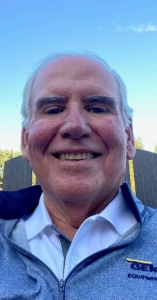The Power of Your Potential
I like to tell the story of a young person, at the age of sixteen, being told that they have a lot of potential. That person feels proud and is happy with themselves. Then talking to the same person when they are at the age of sixty-six and saying the same thing. What would be the reaction then? Perhaps it would be what have you done for the past fifty years.
Potential is an interesting element, isn’t it? We have used and heard about many tools used to measure or determine someone’s potential. SAT tests to qualify for University, ACT used for the same purpose. Briggs-Myers, and Caliper to name a few. In sports you have seen qualification events, you have seen auditions for the arts. All of these things leave out something I think which is very significant. The individual freedom to choose their own path.
Let’s start with a definition of potential that we can use as a foundation to this discussion. Potential is “the skill and the will to develop and perform at a higher level or better level in the future. Potential then sets some kind of benchmark against which the individual can measure progress toward their goal potential. Many of you know that I swam competitively when I was a teenager. I have often said it was through swimming that I became aware of potential. I was always chasing a clock, not another swimmer. I was constantly pushed to beat my best time. To stretch toward a higher level of performance. I have translated that thinking into my views on potential.
Today we have Intelligence tests (IQ) and Emotional tests (EQ) to determine cognitive skills. We have personality tests to determine behavioral attributes. Then we try to determine the principles and values of an individual. Then we pay attention to the motivation of the individual. We try and determine the decision-making skills of an individual. Then we apply situational case studies or put people into a mockup example. We test the heck out of people. Then we interview them for a particular job. Then we make a hire-no hire decision.
Flash forward with me now and we have hired an individual who passed through all of these tests and you want them to work with you on your team. They are hired. Can you imagine their excitement? They got a job. They got a job that they were looking to get. They wanted to work with you. They wanted to do that particular kind of work. I call that person “An Enthusiastic Beginner.” They are all pumped up.
What happens from that point forward is dependent on the leader. How do you handle onboarding a new employee? Once the onboarding is done how is the employee introduced to their work? How are they trained? How often does the leader communicate with the new employee? I often see examples where the leader has seriously impacted the employee. The employee can become disillusioned with the Company and their job. This can be caused by the leader not being attentive enough to the needs and goals of the new employee. Or the employee can become very cautious about how they do the job. The leader can use bullying tactics. All that the company wants is a self- reliant employee. All the employee wants is an opportunity to make a difference.
As people move from being at home as a youngster and transitioning to school, or from school to the workforce they are presented with obstacles. At some point we are told that everything is possible and you will do great things only to find out that it is not true. Not everything is possible and it is hard to see how you can do great things. At other times we become sensitive to other peoples’ needs and wants for us. We are afraid of hurting their feelings if we decide that this job is not what you want and you choose to leave. Or there is the BIG dog in the room, we are afraid that we will fail in the pursuit of our dreams. Some people are even afraid to succeed. This is tough duty. Finding your place in the world, finding your passion is tough enough. Finding your potential is even more difficult.
In our Learning Without Scars business, we want to help in this process. We have created job function skills assessments, with the sole purpose of providing an object measure of an individuals’ skills and competence in the job. This is not opinions anymore. It is not subjective. We suggest to our clients that they use these assessments in many ways:
- The hiring processes
- The performance reviews
- The salary and wage administration
- The development of career paths
In the education world the students are classified as developing, beginning, intermediate and advanced. We use the same structure and the score obtained in the assessments to allow the employee and the company to design an individualized learning program for each individual. This is the product of the thousands of students we have had in classes and webinars first with Quest, Learning Centers and now with Learning Without Scars. We know which subject specific classes apply to each level of skills for each job function. We provide guidance with eight classes being available to fill in the gaps of skills and knowledge. The employee chooses. They know better than anyone where they need the additional knowledge. This approach allows us to be engaged in the process with our clients of helping each individual identify and strive to achieve their potential.
The time is now.






